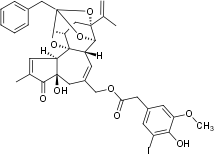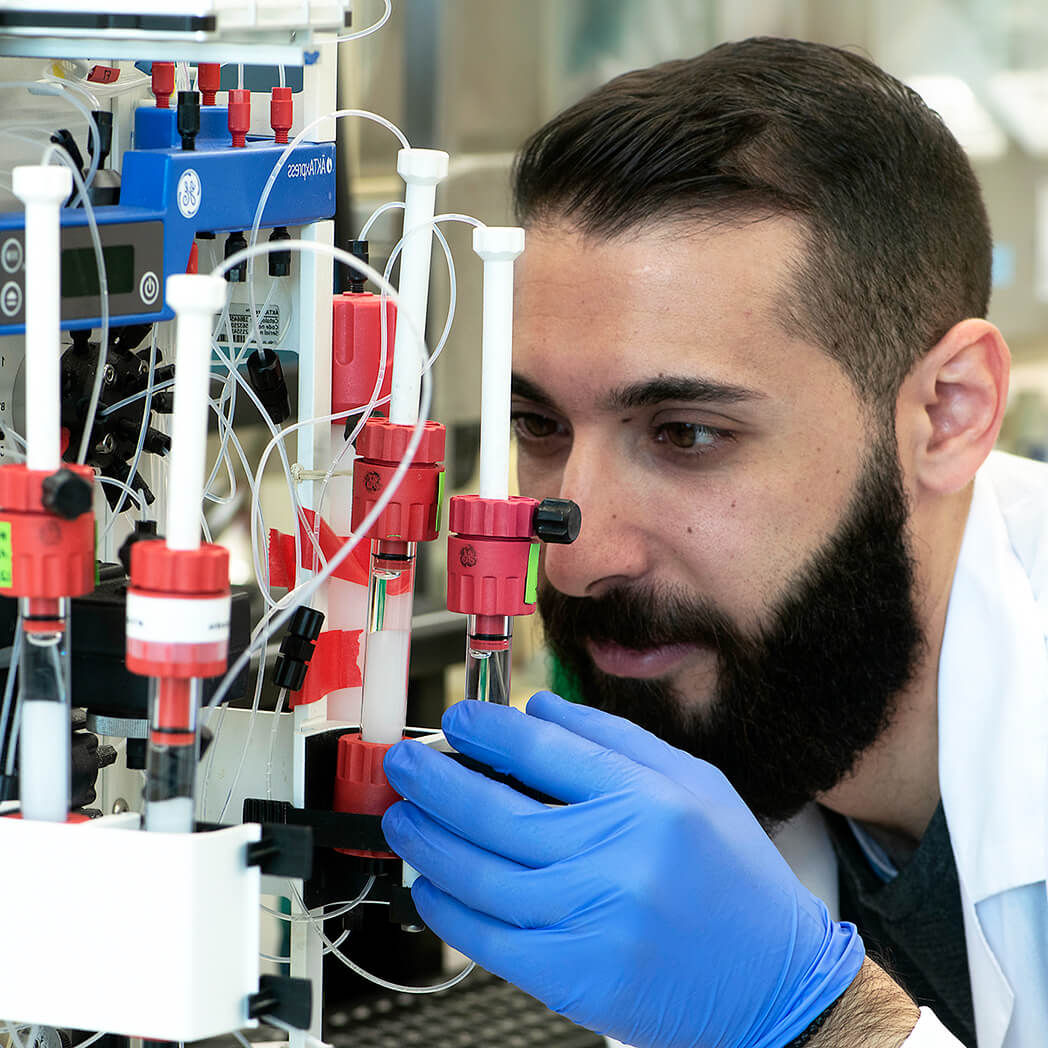Overview
|
Cat #:
I-805
Purity: >98%
CAS No.: 335151-55-8
MW: 754.6
Form: Lyophilized
6’-Iodoresiniferatoxin (#I-805) is a highly pure, semi-synthetic, and biologically active compound.
Alternative Name 6’-IRTX
MW: 754.6
For research purposes only, not for human use
Applications
Our Bioassay
Our bioassay
 Alomone Labs 6'-Iodoresiniferatoxin induces Ca2+ influx via activation of TRPV1 expressed in HEK293 cells.Cells were loaded with 2 mM fluo-3 AM and then stimulated with 6’-Iodoresiniferatoxin (#I-805). The left panel shows the intracellular Ca2+ levels 10 sec post stimulation with different concentrations of 6’-Iodoresiniferatoxin (ED50 = 0.8 μM) and plotted against drug concentration. The right panel shows intracellular Ca2+ levels before and after stimulation of cells with 2.5 μM 6’- Iodoresiniferatoxin.
Alomone Labs 6'-Iodoresiniferatoxin induces Ca2+ influx via activation of TRPV1 expressed in HEK293 cells.Cells were loaded with 2 mM fluo-3 AM and then stimulated with 6’-Iodoresiniferatoxin (#I-805). The left panel shows the intracellular Ca2+ levels 10 sec post stimulation with different concentrations of 6’-Iodoresiniferatoxin (ED50 = 0.8 μM) and plotted against drug concentration. The right panel shows intracellular Ca2+ levels before and after stimulation of cells with 2.5 μM 6’- Iodoresiniferatoxin.
Specifications
Properties
Technical Specifications
Origin Euphorbia resinifera (Moroccan cactus).
MW 754.6
Purity >98%
Molecular formula C37H39IO9.
CAS No. 335151-55-8
Source Semi-synthetic
Chemical name Resiniferonyl 20-(4-hydroxy-2-iodo-5-methoxyphenylacetate 9,13,14-ortho(phenylacetate).
Biological Activity
Target TRPV1 channels
Effective concentration 50 nM - 1 μM.
Activity 6'-Iodoresiniferatoxin is a partial activator of TRPV1 (Vanilloid/Capsaicin receptor 1) channel1.
References
- McDonnell, M.E. et al. (2002) Bioorg. Med. Chem. Lett. 12, 1189.
Solubility and Storage
Shipping and storage Shipped at room temperature. Product as supplied can be stored intact at room temperature for several weeks. For longer periods, it should be stored at -20°C.
Solubility DMSO or ethanol. Centrifuge all product preparations before use (10000 x g 5 min).
Storage of solutions Up to two weeks at 4°C or six months at -20°C.
Protect from light.
Protect from light.
Scientific Background
References
Scientific background 6’-Iodoresiniferatoxin is an agonist of the TRPV1 (Vanilloid/Capsaicin receptor) channel.1 It is an iodinated form of the potent agonist Resiniferatoxin (#R-400). It displayed high affinity binding (Ki=0.71 nM) for the human TRPV1 receptor and functioned as a partial agonist.1
References
- McDonnell, M.E. et al. (2002) Bioorg. Med. Chem. Lett. 12, 1189.
Last Update: 08/01/2025

